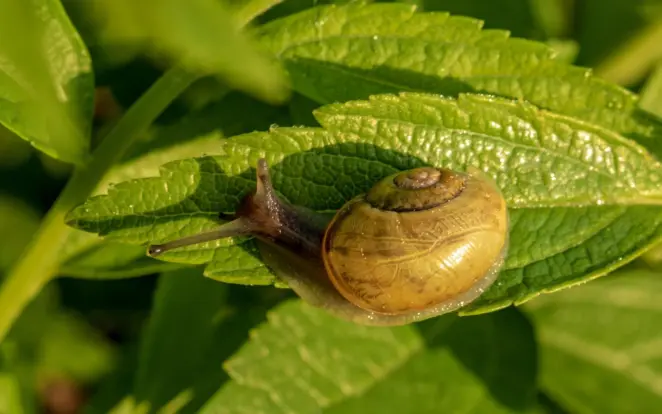White & Rock Salt: Summer Uses
Rock and white salt are both well known as effective de-icers, but their uses don’t end there.
From killing weeds to managing slugs and snails, there are several ways they can be useful during the summer months.
Salt Weed Killer
High-quality de-icing salt can be used to make a home-made weed killer and keep your outdoor spaces looking clean and tidy this summer.
According to The Spruce ‘Salt (sodium chloride) works to kill weeds by dehydrating the plants and disrupting the internal water balance of the plant's cells’. Once absorbed, the weeds will wilt, turn brown, and eventually die.
However, salt is a non-selective herbicide, meaning it is toxic to all plants, not just weeds. This is why it’s important to use it correctly. If used too often and in strong concentration, it can sterilise the soil. This then makes it harder for plants that you want to grow, like grass or flowers, to do so for years to come.

To make your own salt weed killer using salt, simply mix it with water. This will make it easier for weeds to absorb. For areas where soil health is important, such as flower beds or vegetable gardens, a gentler mixture is recommended, so aim for a 3:1 water to salt ratio. Once done, put it in a spray bottle or a container and apply it to the foliage of the weed. Avoid applying it directly to the roots to protect the soil and any nearby plants. For the same reason, this activity should also be done on a wind-free day to reduce the risk of your weed killer getting onto other plants, potentially negatively affecting their health or even killing them.
Alternatively, if you are planning to use your weed killer in an area where the soil’s health is not an issue, such as a driveway, a stronger mixture can be used. Start with a 2:1 salt to water ratio, which can later be increased to 3:1 if you are not seeing the results that you are after. The mixture can then be applied directly to the roots or the foliage of the weed, depending on your preference.
Slug and Snail Management
Rock and white salt can be a great solution for keeping the slug and snail population in your garden under control this summer.
Some of the most common signs that your garden is having a snail and slug problem include irregular holes in the leaves and stems of your plants. These are caused by their rasping mouthparts during feeding. Sometimes you may also notice a shiny, slime trail left behind on your plants.
But how can white or rock salt help in reducing their population? Salt has the ability to draw the water out of a slug or snail, dehydrating them. Once it makes contact with their bodies, they try to produce mucus to try to wash it off, dehydrating themselves within a few minutes.

For snails and slugs that are located away from your plants, sprinkle some salt directly on top of them. However, due to salt’s ability to sterilise the soil over time, this method should only be used occasionally.
If you prefer a method that you can safely use on a regular basis, then you can use a saltwater solution instead. Simply mix 7:1 water to salt and then put your mixture in a big bucket. Once it’s dark outside, grab a torch and inspect your plants for these little creatures. To make the task easier, you can use old bread rolls or vegetable leaves to attract them to certain areas of your garden. You should also inspect any areas that stay dark and moist during the day, for example under any containers as these are likely to be their hiding spots. Once you find a snail or a slug, simply pick it up and put it in your saltwater mixture. Make sure to wear gardening gloves while doing this since snails and slugs can spread infections if handled with bare hands.
The most popular approach to dealing with slugs is to go out with a torch after dark to pick them off plants with a bucket of salt water at the ready.
Road and Driveway Protection
Did you know that around 95% of roads in the UK are made from tarmac? It's also a popular choice for driveways because it doesn’t need much maintenance.
In the summer tarmac can become softer and start to ‘melt’ as soon as it reaches 50°C. Depending on different factors, such as the amount of sunlight or wind, this can happen even with the air temperatures being as low as 23°C.
Dark road material can absorb a lot of heat. The typical summer ground temperature is higher than air temperature.
Once melting, tarmac becomes shiny and sticky. This reduces grip, which can affect braking and steering, making accidents more likely. It can also be dangerous for pedestrians as it may stick to shoes, making walking more difficult. If touched directly, melted tarmac can also cause skin burns.
If this happens, simply sprinkle some white salt or rock salt onto the affected area. Salt attracts moisture from the air, helping to cool the tarmac down and creating a protective barrier and stopping it from deteriorating. This is why sometimes you may be able to see gritters being out in the summer.
To learn more about this, read our ‘Gritting the Roads During a Heatwave?’ blog.

While commonly associated with winter, both rock salt and white salt can be just as useful during warmer months.
Whether you are dealing with stubborn weeds, snails, slugs, or a melting driveway, having some salt on hand can make all the difference.


